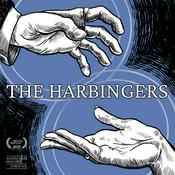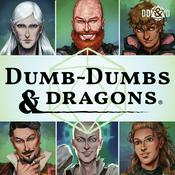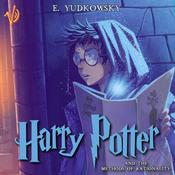61 episodes

Stranger Things: The REAL Upside Down is Weirder Than You Think
26/11/2025 | 52 mins.
Subscribe to Does It Fly? Pod: https://www.youtube.com/@doesitflypod?sub_confirmation=1On DOES IT FLY?, we explore the science and story logic behind your favorite pop culture topics. Today, we’re looking at whether the science and story logic behind the Upside Down from Netflix’s Stranger Things could work!The final season of Stranger Things has finally arrived on Netflix, and we know it was worth the wait. Stranger Things season 5 might be the most anticipated new season of a Netflix series in history. And with good reason. An instant sensation from when it first premiered in 2016, the kids from Hawkins have captivated new audiences and nostalgia enthusiasts alike with their unique blend of prestige TV storytelling and nods to classic directors like Steven Spielberg, David Cronenberg, John Carpenter, Joe Dante, and more.And central to Stranger Things lore is the Upside Down, the weird parallel dimension that lurks alongside the fictional Hawkins, Indiana. So how does this relate to hard science concepts like string theory, dark matter, or the fundamental forces of the universe? And since one of the reasons Stranger Things has endured for nearly a decade is just how well the lore works, we’ll take a deep dive into the concepts and behind-the-scenes facts that make it all hang together. Check out the latest episode of Does it Fly? to learn more!https://youtu.be/dXNJsDMCICoFOLLOW US!Stay in the loop! Follow DOES IT FLY? on:♦ YouTube: https://www.youtube.com/@doesitflypod?sub_confirmation=1♦ TikTok: https://www.tiktok.com/@doesitflypodAnd don’t forget to follow Roddenberry Entertainment for more sci-fi insights:♦ Instagram: https://www.instagram.com/roddenberryofficial/♦ Facebook: https://www.facebook.com/roddenberry♦ Bluesky: https://bsky.app/profile/roddenberrypod.bsky.socialFor Advertising Inquiries: [email protected] by: Kelsey GoldbergTechnical Director: Andrew HalleyRODDENBERRY ENTERTAINMENT | 2025

WICKED: FOR GOOD - WHAT IF ANIMALS COULD TALK?!?
21/11/2025 | 55 mins.
One of the best things about the version of Oz portrayed in the Wicked movies is the wonderful talking animals. But how real could they actually be?Wicked: For Good is finally here, so it’s time to return to that magical land of Oz to celebrate one of the most beloved (and commercially successful) musicals of our era. And we don’t JUST mean Wicked, but also MGM’s original, beloved Wizard of Oz. OK, who are we kidding, we’re mostly here to talk about Wicked and Elphaba again.Last time we went to Oz, it was to discuss why everyone’s favorite (don’t call her) wicked witch, Elphaba, had green skin, and what kind of scientific possibilities and reasoning there might be for that unique color in the real world. But this time, we’re discussing the talking animals of Oz! Ever wonder how close we might be to a dryly-witted talking goat like Dr. Dillamond? Or whether animals might be capable of speech in general?The answers might surprise you, as they did us. But also, we hadn’t quite considered how our lives would change if animals could express themselves the same way humans can. Wouldn’t your lifestyle be a little different if animals could speak to you? How have these talking animals been portrayed elsewhere in pop culture, anyway? And while we’re at it, we’ll share behind the scenes details about how a moment in Wicked brought out the best in some real animals out there.Check out the latest episode of Does it Fly? to learn more!https://www.youtube.com/watch?v=hK_ppck3cDQSUGGESTED VIEWINGBy now, we assume that you have seen the first Wicked movie, because it made all the money and thus we assume everyone on the planet has. However, it would be helpful to understand this episode if you did. We had not yet seen Wicked: For Good at the time we recorded this episode.But just as we did in our previous Wicked episode, we’d like to suggest MGM’s original The Wizard of Oz (1939), Sidney Lumet’s The Wiz (1978), and the surprisingly disturbing Return to Oz (1985). Get on your brooms and go!FURTHER READINGDo you want to delve a little deeper into the facts, concepts, and stories Hakeem and Tamara referenced in today’s episode? Of course you do! Speech vs. CommunicationAs anyone who has a pet knows, animals DO communicate, both with each other and with humans. So it helps to delineate the differences between speech and communication.You say larynx, I say syrinx…Birds do sing, but they have an entirely different vocal mechanism than humans do. It’s a remarkable organ, and you can learn about it here.Vocal learningEssentially, how many sounds can an animal (including humans) learn and retain? Once again, birds have a remarkable “vocabulary” in this regard, but there are other advantages to vocal learners.Movie Science AdvisorsFor more on Tamara’s explanation about the role of science advisors in film, from someone who was there!Singing Before SpeechDr. Erich Jarvis has come to some fascinating conclusions about the origins of human speech and its roots in…song?Hollywood, Health & SocietyWe wouldn’t have even known this amazing organization exists if it weren’t for Tamara!The “Animal Unit”The article that Tamara cites regarding behind-the-scenes details about creating such realistic talking animals in Wicked and Wicked: For Good can be found here.WANT MORE FROM DOES IT FLY?The companion piece to this episode of Does it Fly? was about why Elphaba has green skin. Watch it here!Want some more fantasy-flavored family friendly viewing? Check out our episode on How to Train Your Dragon right here!FOLLOW US!Stay in the loop! Follow DOES IT FLY? on:♦ YouTube: https://www.youtube.com/@doesitflypod?sub_confirmation=1♦ TikTok: https://www.tiktok.com/@doesitflypodAnd don’t forget to follow Roddenberry Entertainment for more sci-fi insights:♦ Instagram: https://www.instagram.com/roddenberryofficial/♦ Facebook: https://www.facebook.com/roddenberry♦ Bluesky: https://bsky.app/profile/roddenberrypod.bsky.socialFor Advertising Inquiries: [email protected] by: Kelsey GoldbergTechnical Director: Andrew HalleyRODDENBERRY ENTERTAINMENT | 2025

The Terrifying REALITY of A NIGHTMARE ON ELM STREET!
03/10/2025 | 50 mins.
Subscribe to Does It Fly? Pod: https://www.youtube.com/@doesitflypod?sub_confirmation=1On DOES IT FLY?, we explore the science and story logic behind your favorite pop culture topics. Today, we’re asking: if you die in your dreams, will you die in real life, like we see in the Nightmare on Elm Street movies?“Welcome to prime time…”Freddy Krueger“One, two, Freddy’s coming for you…three, four, better lock the door…five, six, grab your crucifix…seven, eight, better stay up late.” For some of us, horribly scarred by R-rated horror movies in heavy rotation on HBO as kids, this little nursery rhyme first heard in A Nightmare on Elm Street was about as well known as the Pledge of Allegiance. It’s a simple, memorable admonition to not fall asleep lest serial killer Freddy Krueger visit you in your dreams to make sure you won’t wake up that held considerable power over our imaginations. But it’s also so much more.A Nightmare on Elm Street, as well as its parade of sequels (of…varying quality, but we’ll get to that) taps into a certain primal fear of the unknown. Sleep is one of the little deaths in our life. We surrender ourselves to forces we don’t truly understand, where we then are bombarded with symbolic narratives as our brains keep firing while our bodies rest. The simple question of “if I go to sleep, what if I don’t wake up?” is one that every child has asked their parents. And there’s that long standing urban legend that if you die in your dream, well, your real life body will follow.Is there any truth to that? If you die in your dreams, will you ACTUALLY die in real life? And what about the actual science of dreams and sleep? And how the heck did Wes Craven and friends weave it all together to create one of the most compelling horror stories of all time?Check out the latest episode of Does it Fly? to find out! And…let’s hope we don’t put you to sleep. Put some coffee on or something, geez!https://youtu.be/h0A0QX0nH0cFURTHER VIEWINGVirtually everything we cover in terms of the dream logic of Freddy Krueger and this franchise can be found in Wes Craven’s original A Nightmare on Elm Street, a true classic of ‘80s horror and one of the most influential films of its kind of all time!And yes, the rest of the franchise is kind of hit and miss, but they’re all entertaining as hell. If you ONLY watch one of the sequels, check out A Nightmare on Elm Street 3: The Dream Warriors, which is generally beloved and the best of the bunch. But for you Scream fans (another Wes Craven masterpiece), you might also want to give Wes Craven’s New Nightmare a look, as it’s almost the prototype for Scream!And if all that is old (and ratty) hat to you, maybe it’s time to check out the brilliant Never Sleep Again: The Elm Street Legacy documentary.FURTHER READINGDo you want to delve a little deeper into the facts, concepts, and stories Hakeem and Tamara referenced in today’s episode? Of course you do! A Quick Overview of SleepNot just the different stages of sleep, but a breakdown of what can go wrong during them, can be found here!Night TerrorsWhile that sounds like it could be a movie title, it’s an actual scientific term, and these ain’t your average nightmare! But those can lead to…Sudden Unexplained Nocturnal Death SyndromeAnd while this one sounds like a really awful band name, it is one of the cruxes of the fear of dying in your dreams.Lucid DreamingIf you want to actual kick Freddy’s ass while you sleep, then you’d better master the art of lucid dreaming! Here’s how.Men, Women, and ChainsawsTamara cites this important work on the role of gender in the horror genre and you should check it out, too!Freddy Lives!Want more behind the scenes details on the franchise? Well, here you go.WANT MORE FROM DOES IT FLY?Who says we don’t cover horror on this show? Just check out this howlingly good episode we did on werewolves if you don’t believe us!It’s spooky season and The Crow absolutely fits the vibe, if you want some heroics with your horror. Check it out here.FOLLOW US!Stay in the loop! Follow DOES IT FLY? on:♦ YouTube: https://www.youtube.com/@doesitflypod?sub_confirmation=1♦ TikTok: https://www.tiktok.com/@doesitflypodAnd don’t forget to follow Roddenberry Entertainment for more sci-fi insights:♦ Instagram: https://www.instagram.com/roddenberryofficial/♦ Facebook: https://www.facebook.com/roddenberry♦ Bluesky: https://bsky.app/profile/roddenberrypod.bsky.socialFor Advertising Inquiries: [email protected] by: Kelsey GoldbergTechnical Director: Andrew HalleyRODDENBERRY ENTERTAINMENT | 2025

Romancing Superman: How Lois and Clark Get Intimate
19/9/2025 | 31 mins.
Superman (2025) brings audiences a version of Lois Lane and Clark Kent who are clearly very hot for each other. But could they ever actually consummate their relationship?“Putting it delicately…do you…eat?”Pulitzer Prize winning reporter Lois LaneWelcome to Does it Fly? After Dark, the podcast that puts your favorite pop culture concepts to the test…but this time in a slightly more adult setting. That’s right, for this episode, we were live in front of an audience (at Mission Brewery in San Diego, California) with our brilliant friends Rosie Knight and Jason Concepcion of I Heart Media’s X-Ray Vision podcast. Honestly, we needed all the help we could get to discuss the hot button issue of the moment: how is it possible for Superman and Lois Lane to have sex?Look, anyone who watched Rachel Brosnahan and David Corenswet as Lois and Clark on screen in James Gunn’s brilliant Superman movie this year absolutely could feel the heat coming off those characters from the screen. So it’s not “how COULD they” so much as it is “seriously, HOW could they?” As we all know, Kryptonians are made of, um, harder stuff than humans, and folks have spent the better part of 80 years quietly asking how Superman and Lois can be intimate without serious injury to the human part of the equation.Sure, there aren’t many actual scientific studies involving human to alien sex, so we examined this heat-vision hot topic from all positions…sorry…angles in a raucous, slightly more R-rated format than usual. Check it out, but beware…this episode contains adult themes and strong language!Watch the video version here! https://youtu.be/4E3Zc3uT97MThis episode of Does it Fly is brought to you by Upper Deck. Fleer Brilliants Superman shines the light on Superman and Metropolis in a bright and brilliant new way!Whether it’s the 90-card base set on rainbow foil board featuring art by some of the greatest artists in Superman history or highly collectible inserts like “Classic Covers,” “Last Son of Krypton,” “World of Metropolis,” Truth, Justice, and a Batter Tomorrow” or the super rare “Powered by the Sun” cards, Fleer Brilliants Superman is the ultimate tribute to the Man of Steel and his friends, family, and foes.Head to upperdeckstore.com to start your collection, today!FURTHER VIEWINGMuch of what prompted our discussion about Clark Kent and Lois Lane actually getting down to business came from the radiation burns level hot chemistry that co-stars David Corenswet and Rachel Brosnahan have on screen in James Gunn’s Superman (2025). You can now watch this on HBO Max if you need further proof. But also!Let’s also refer you back to Richard Lester and Richard Donner’s Superman II (1980) in which Clark (Christopher Reeve) temporarily gives up his powers to be with Lois (Margot Kidder) and there’s a pretty sensual moment of the two of them in bed together in the Fortress of Solitude. That being said, Clark was a “normal man” there, but the fact that he had to give up his powers in order to get there might be an indication.Mid-1990s TV series Lois & Clark: The New Adventures of Superman often featured their Lois (Teri Hatcher) and Clark (Dean Cain) in an ongoing will they/won’t they fury of sexual tension (they eventually did). But the specific episode where they learn they can’t have children together because of Clark’s alien biology was the series finale, season 4, episode 22.And, of course, Smallville was a remarkably horny show and there’s uh…several episodes dealing with the matter of Clark (Tom Welling) having sex with human women. But one in particular is season 7, episode 7, “Wrath” in which Lana Lang (Kristin Kreuk) gains powers so Clark doesn’t have to worry about holding back. But the real fun with Smallville is the long and winding and horny journey, so feel free to just wallow in Clark’s awkwardness throughout.We also have fun with the question of the “kryptonite condom” raised by Kevin Smith’s slacker comedy classic Mallrats.FURTHER READINGDo you want to delve a little deeper into the facts, concepts, and stories Hakeem and Tamara referenced in today’s episode? Of course you do! Man of Steel, Woman of KleenexYou think we’re the first people to consider this topic? Famed sci-fi and fantasy author Larry Niven first tackled this topic way back in 1969 (nice!). It’s available online to read here.And in the Comics…For more than half of Superman’s published history, it was more or less implied that he was pretty chaste. Aside from the major romantic players in his life like Lana Lang and Lois Lane, Superman has at various times been intimate with Maxima (a powerful alien who sees Supes as perfect to have kids with), Wonder Woman (during DC’s “New 52” era and a fling which is almost certainly no longer canon), and others. But the real progression of his romance with Lois Lane, which eventually leads to the birth of their son, Jon, began in the mid-90s and Jon’s birth and its aftermath are depicted in the Convergence: Superman and Lois and Clark limited series by Dan Jurgens and Lee Weeks which are pretty much the starting point for their modern/current relationship.WANT MORE FROM DOES IT FLY?The companion piece to this episode is our much more family-friendly examination of the concept of Superman getting his powers from the yellow sun of Earth.And for something not remotely sexy, we looked at the horrifying reality of the Joker toxin from Batman (1989) here.FOLLOW US!Stay in the loop! Follow DOES IT FLY? On:♦ YouTube: https://www.youtube.com/@doesitflypod?sub_confirmation=1♦ TikTok: https://www.tiktok.com/@doesitflypodAnd don’t forget to follow Roddenberry Entertainment for more sci-fi insights:♦ Instagram: https://www.instagram.com/roddenberryofficial/♦ Facebook: https://www.facebook.com/roddenberry♦ Bluesky: https://bsky.app/profile/roddenberrypod.bsky.socialFor Advertising Inquiries: [email protected] by: Kelsey GoldbergTechnical Director: Andrew HalleyRODDENBERRY ENTERTAINMENT | 2025

How the Vulcan Mind Meld from Star Trek Works
22/8/2025 | 48 mins.
“My mind to your mind. My thoughts to your thoughts…”Vulcans right before they guess your phone password.We’ve all seen them do it. A Vulcan gets cozy with an individual, gently places a perfectly-manicured and long-fingered hand along their face, gets that distant look in their eye, and suddenly their minds are one. No, it’s not a clever party trick, it’s an incredibly useful information gathering tool, as well as an intimate (even emotional) act that Vulcans don’t take lightly and thus only deploy in circumstances that absolutely demand it. Yes, we’re talking about the Vulcan Mind Meld this week! And despite being one of the most famous pieces of Star Trek lore there is surprisingly (or perhaps thankfully) little on screen explanation of it. But explaining how a mind meld may or may not work requires us to dig into how brains actually conjure up and store things like memories, the electrical impulses that make up thoughts, and actual real world non-verbal communication. There are also some fascinating pieces of Star Trek history to be uncovered in our quest to determine not just the “how” of this famed plot and story device, but the “why” of how it came to be. Our hosts, Dr. Hakeem Oluseyi and Tamara Krinsky have once again performed a mind meld of their own to bring you the very best breakdown of sci-fi and pop culture you’re going to find in this quadrant.Check out the latest episode of Does it Fly? right here if you don’t believe us!https://youtu.be/YllWLbrhKP0?si=xJxH6Gbb2mUVnbUdFURTHER VIEWINGDespite being one of the most famous bits of Star Trek lore, the Vulcan Mind Meld is something that’s only been used relatively sparingly on screen. You probably know the broad strokes of what it is and what it’s supposed to do, but here are the specific episodes and moments we used for reference in this episode:Star Trek season 1 episode 9 - “Dagger of the Mind”Star Trek: The Next Generation season 3 episode 23 - “Sarek”Star Trek: Voyager season 1 episode 8 - “Ex Post Facto”Star Trek: Voyager season 2 episode 16 - “Meld”Star Trek: Enterprise season 1 episode 17 - “Fusion”FURTHER READINGDo you want to delve a little deeper into the facts, concepts, and stories Hakeem and Tamara referenced in today’s episode? Of course you do! What is a Mind?Oh no, are we getting all philosophical again like we did in our recent Freaky Friday episode? Well…maybe not as much this time. In fact, to prove it, here is an exceedingly scientific breakdown of what makes up the brain itself: neurons and how they work! See also: the concept of “theory of mind” which we have also discussed recently!Brain Energy SignalsIn order to detect what a brain is thinking, you need to read the signals…which may be electrical in nature but come in units of measure we aren’t used to dealing with!Mirror NeuronsNo, not neurons that make you behave like your evil double from a parallel universe (sorry, this is a Star Trek episode, so couldn’t resist), these are far more practical. And in a way, it’s a form of mind meld!Technological Mind MeldsThe scientific study that Hakeem references where scientists used technology to essentially create a mind meld was captured on video here.Where are Memories Stored in the Brain?In order to access the thoughts of another, they have to theoretically be stored somewhere, right? All this and more answered here.Behind the Scenes! If you want to go deeper into Tamara’s explanations about how the Mind Meld came to be, we always recommend These are the Voyages, TOS Season One by Marc Cushman and Susan Osborne and The Fifty-Year Mission: The Complete, Uncensored, Unauthorized Oral History of Star Trek - The First 25 Years by Ed Gross and Mark A. Altman.WANT MORE FROM DOES IT FLY?This ain’t our first rodeo (in this case, “rodeo” means “exploration of concepts from Star Trek)! Our first episode ever took on the transporter and you can watch that right here.We also took a closer look at the Genesis Device from Star Trek II: The Wrath of Khan. Watch it here!WE ARE RUNNING A CONTEST! WIN SOME COOL PRIZES!Does It Fly? Presents: The Ultimate Nerd GiveawayRoddenberry Entertainment's Does It Fly? is proud to present a giveaway that will make all of your nerd, geek, and sci-fi fan hearts flutter. Want to know how to enter and win? The main thing you’ll want to do is watch and listen for the secret word which will be mentioned in this and upcoming episodes. You’ll see the word appear on screen at a random point in the broadcast as our hosts say it, and it will be accompanied by a tone for our audio listeners. The secret word will appear in Does it Fly? episodes released between July 2 and August 22 so don’t miss ‘em!But there are SO MANY OTHER WAYS TO ENTER! So log in at this link and learn all the different ways you can enter to win! https://gleam.io/IhJtq/dif-ultimate-nerd-giveawayNow, as for those prizes…SECOND RUNNER UP:Prey Soundtrack VinylCaptain Pike FlexfigJudge Q FunkoFIRST RUNNER UP:Prey Soundtrack VinylPredator Elder Greyback FunkoPredator City Hunter FunkoCaptain Sisko FlexfigClassic PhaserGRAND PRIZE:Prey Soundtrack VinylJurassic Park Dilophosaurus Hatchling FunkoJurassic Park T. Rex Hatchling FunkoJurassic Park Velociraptor HatchlingJurassic Park Stygimoloch Hatchling FunkoGentle Giant Saru BustFOLLOW US!Stay in the loop! Follow DOES IT FLY? on:♦ YouTube: https://www.youtube.com/@doesitflypod?sub_confirmation=1♦ TikTok: https://www.tiktok.com/@doesitflypodAnd don’t forget to follow Roddenberry Entertainment for more sci-fi insights:♦ Instagram: https://www.instagram.com/roddenberryofficial/♦ Facebook: https://www.facebook.com/roddenberry♦ Bluesky: https://bsky.app/profile/roddenberrypod.bsky.socialFor Advertising Inquiries: [email protected] by: Kelsey GoldbergTechnical Director: Andrew HalleyRODDENBERRY ENTERTAINMENT | 2025
More Fiction podcasts
Trending Fiction podcasts
About Does It Fly?
Listen to Does It Fly?, The Leviathan Chronicles and many other podcasts from around the world with the radio.net app

Get the free radio.net app
- Stations and podcasts to bookmark
- Stream via Wi-Fi or Bluetooth
- Supports Carplay & Android Auto
- Many other app features
Get the free radio.net app
- Stations and podcasts to bookmark
- Stream via Wi-Fi or Bluetooth
- Supports Carplay & Android Auto
- Many other app features


Does It Fly?
download the app,
start listening.



































